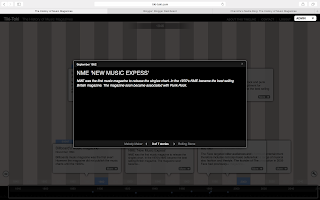When analysing magazines we focus of two main sections. These include images and text.
Every images is taken using a specific shot. Each shot has a different connotation.
Shots
Magazines have 3 main shots that are conventionally used;
Long shot shows the whole body which allows the background and costumes to be seen (often used with bands to show every member). This can be used to show props that are usually associated with the musician. This can also create a dramatic presence of the model on the cover as their pose can connote a feeling, for example : power.
Mid shot consists of the artists torso and above. Similarly to a long shot, this shows the background and any props or costumes used but aims to show more detail to the audience. This shot is usually used when featuring bands so that all members can be seen. It can connote familiarity as this is a typical real life view that the audience experiences on a daily basis.
Big close up (BCU) usually consist of a close up of the artist face. This creates an intense emotional and personal connection to the artist. It is very successful when an issue focuses on a single artist as it connotes emotion and makes the audience feel more involved with the life of the featured musician.
Mise en scene
Colour should also be taken into account when analysing both text and images. Different colours have different connotations. When analysing, these connotations should be considered. For example,
red connotes fear, danger, love and sex - Using the colour
red makes the audience subconsciously think of these connotations and therefore can give an indication of the issues contents.
Costume , including makeup and hair can give an indication of the contexts of the magazine. Costumes can also show the ideology of the artist and music genre featured on the magazine.
Props are used such as instruments, especially is they are stereotypically associated with the artist.
Positioning within the image also comes under miss en scene. For example if the cover featured two artist that worked together they would be positioned closely together. Additionally the positioning of text on the cover is important as it can draw attention to specific articles and can makes the cover more or less aesthetically pleasing.
Lighting
There are many different types of
lighting that can be used. Lighting can also come under miss en scene.
- High key lighting is bright studio lighting and can suggest they artist is revealing something personal or show how they are always is the limelight.
- Low key lighting is much darker then high key and is more often used in indie or punk rock magazines.
- Finally backlighting can be used to give a unique feel; it involves lighting coming from behind the model and therefore becomes blocked by their silhouette.
































